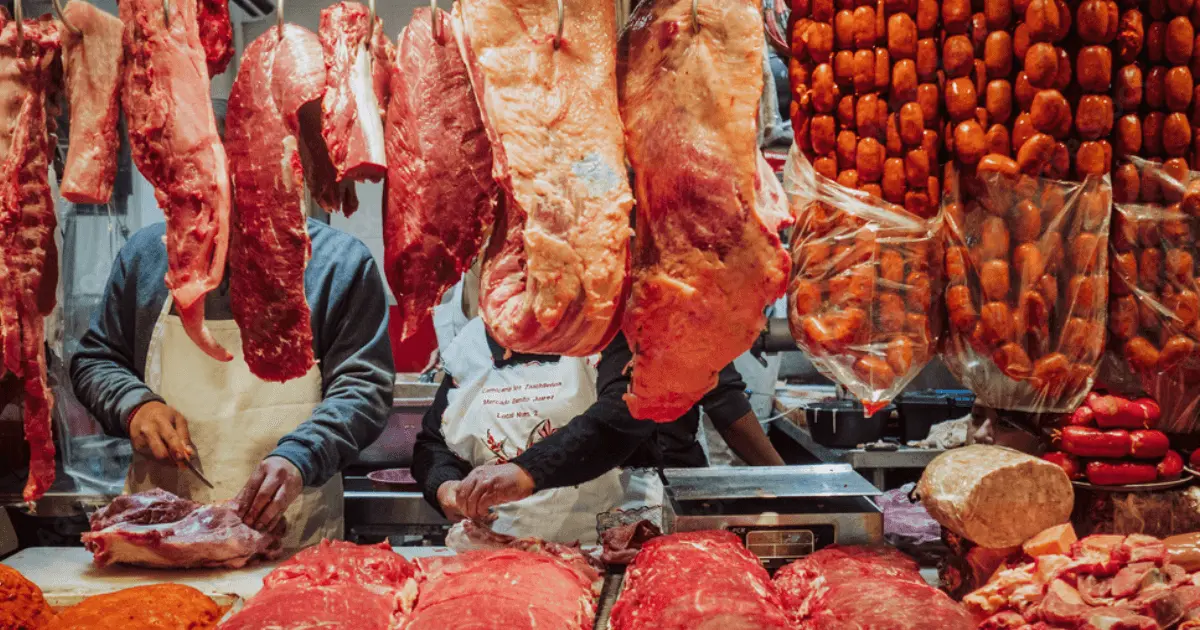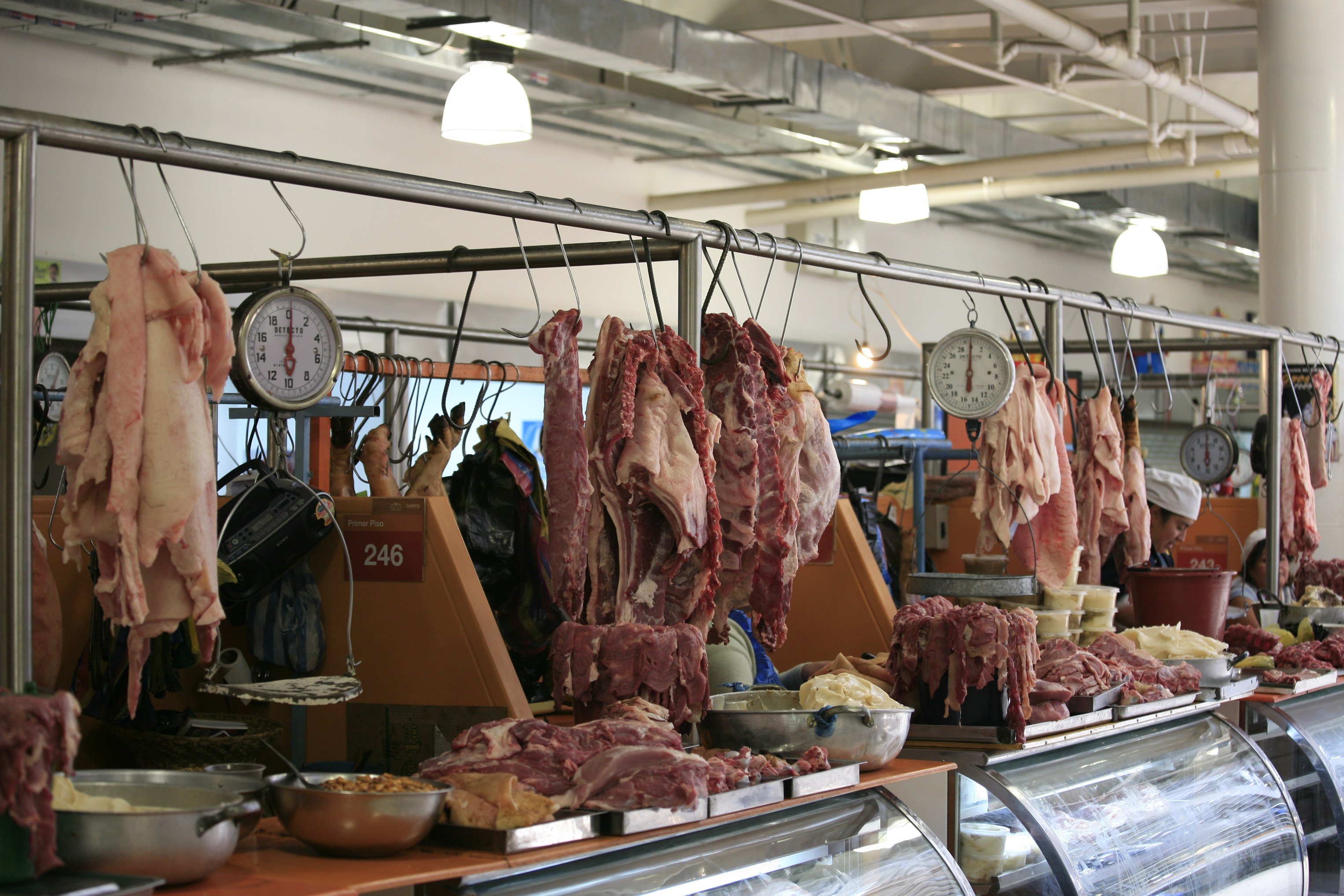Why Residents Love Bagley Farms Meat Market Edwardsville IL for Their Meat Purchasing
Why Residents Love Bagley Farms Meat Market Edwardsville IL for Their Meat Purchasing
Blog Article
Discover the Art of the Butcher's Cut in a Modern Meat Market
In the ever-evolving landscape of contemporary meat markets, the butcher's cut has actually transcended its standard roots, merging olden craftsmanship with contemporary methods. bagley farms meat market edwardsville il. Today's butchers are not just cpus of meat; they are knowledgeable artisans that highlight sustainability and ethical sourcing. Their experience in picking and preparing cuts tailored to certain culinary demands offers an unparalleled dining experience. Yet, what absolutely sets the contemporary butcher apart is their capacity to build a much deeper connection between customers and the origins of their meat. Exactly how do these masters equilibrium tradition with technology, and what ramifications does this have for the future of meat consumption?
Advancement of Butchery Techniques

The mid-20th century saw butchery techniques additionally fine-tuned by clinical insights right into muscle mass biology and meat aging, boosting both tenderness and preference. Technologies like vacuum product packaging and refrigeration prolonged item shelf-life, permitting butchers to branch out offerings and boost quality control. This period additionally noted the surge of specialized tools, such as band saws and meat slicers, which enhanced precision and effectiveness in meat processing.
The 21st century has presented electronic innovation right into the butchery world. Electronic systems currently assist in monitoring pet provenance and optimizing cuts to meet details client preferences. Additionally, a renewal in artisanal butchery has actually arised, mixing standard skills with modern-day expertise to satisfy consumers seeking ethical and lasting meat options. This development underscores a dynamic interaction between tradition and technology, meeting contemporary needs while preserving the craft's heritage.

Comprehending Meat Cuts

Understanding the intricacies of meat cuts is crucial for both butchers and customers looking for top quality and worth. Each cut comes from a different part of the pet, imparting special tastes, appearances, and cooking methods. Proficiency of these differences not only enhances culinary experiences yet also maximizes the energy of each carcass. For butchers, specific cuts mirror skill and regard for the craft, making certain marginal waste and ideal return.
The primary groups of meat cuts include primal, sub-primal, and retail cuts. Primal cuts, such as the loin, rib, and chuck, are the huge areas at first separated from the carcass. Butchers then damage these down better right into sub-primal cuts, prior to ultimately generating retail cuts available to consumers, like ribeye or tenderloin. Each stage requires careful interest to physiological framework and muscle make-up.
Recognizing muscle mass structure is important; muscular tissues utilized a lot more often by the pet have a tendency to be harder and are best suited for sluggish cooking methods, while less-used muscular tissues, like those discovered in the loin, are much more tender and ideal for cooking or roasting. Familiarity with these differences encourages consumers to make enlightened selections, improving their culinary ventures.
Picking High Quality Meat
Choosing the right meat includes even more than just selecting a visually enticing piece from the display screen. The art of choosing quality meat requires a critical eye and expertise of specific attributes that represent quality and quality. Pay interest to the color; beef should have an intense, cherry-red tone, while lamb should show a soft pink tone, and pork a light pink. This indicates the meat is fresh and hasn't been revealed to oxygen for too long.
Secondly, consider the marbling, which describes the white streaks of fat within the muscular tissue. Proper marbling is an essential indication of tenderness and flavor, as it thaws during cooking, improving the meat's juiciness. Bear in mind, greater marbling frequently correlates with superior quality cuts, such as USDA Prime.
Appearance is one more critical aspect; meat ought to feel firm to the touch, not slimy or excessively soft. In addition, be conscious of the fragrance. Fresh meat should have a clean, neutral smell, free from any sour or repulsive odors.
Coupling Cuts With Food Preparation Methods
Efficiently combining cuts of meat with the ideal cooking approaches is essential for achieving ideal flavor and structure. These approaches improve the meat's natural tastes and guarantee a juicy surface.
On the other hand, tougher cuts like brisket and chuck roast are abundant in collagen, which damages down into gelatin when prepared gradually. These cuts are suitable for braising or slow roasting, permitting the meat to tenderize over time and establish deep, complicated flavors. In a similar way, cuts such as brief ribs and pork shoulder fare well with slow-cooking methods, where prolonged cooking times transform their durable appearances right into delicious meals.
Lamb shanks and oxtail, which need prolonged cooking to soften, are ideal candidates for stewing or sluggish simmering. These methods coax out rich, hearty flavors while preserving wetness. By recognizing the one-of-a-kind basics features of each cut, chefs and home cooks alike can elevate their culinary productions, guaranteeing each dish is both pleasing and memorable.
The Butcher's Function Today
Navigating the advancing landscape of the modern meat market, the butcher's function today extends past mere preparation of cuts. Contemporary butchers are cooking craftsmens, educators, and advocates for lasting techniques. They connect the void in between the ranch and the fork by ensuring ethical sourcing, understanding animal husbandry, and prioritizing openness in the supply chain. This change reflects the expanding customer need for top quality over amount, where provenance and animal welfare are vital.
Along with crafting specific cuts, butchers currently engage directly with clients, offering cooking recommendations and tailoring choices to fit private demands and preferences. Their knowledge in meat aging, marbling, and flavor accounts empowers customers to make informed choices, boosting their culinary experiences. This customized service exemplifies the butcher's developing function as a trusted consultant in the kitchen area.
Additionally, butchers are essential in reducing waste, making use of whole animals to create diverse products such as sausages and supplies - bagley farms meat market edwardsville il. This thorough approach not just respects the animal however likewise straightens with modern sustainability goals. This way, the contemporary butcher personifies both tradition click here to read and innovation, adjusting to an ever-changing market while preserving the artistry and integrity of their craft

Final Thought
The modern butcher's craft elaborately weaves conventional strategies with modern-day innovations, highlighting lasting methods and ethical sourcing. Mastery in comprehending diverse meat cuts and quality indicators empowers butchers to offer educated recommendations, lining up certain cuts with optimum food preparation techniques. This expertise not only boosts culinary experiences however additionally strengthens the connection between customers and the beginnings of their food. By honoring historical methods while welcoming contemporary demands, the butcher's click site duty continues to be essential in today's advanced meat market.
Report this page